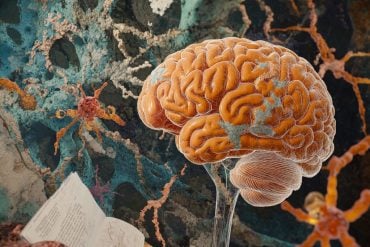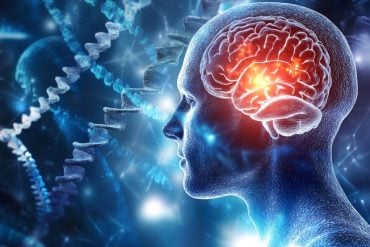Horses with a rare nerve condition have similar signs of disease as people with conditions such as Alzheimer’s, a study has found.
The findings shed new light on the causes of the rare but predominately fatal horse condition and could help to develop new tools for diagnosing the illness.
Scientists say that horses affected by the disease – called equine grass sickness – could also hold clues to human conditions.
Grass sickness attacks nerve cells in horses but the causes of the disease are unknown. It causes gastric upset and muscle tremor and can kill within days. If diagnosed quickly, animals can sometimes be nursed back to health.
Researchers from the University of Edinburgh’s Roslin Institute and Royal (Dick) School of Veterinary Studies looked at nerve tissue from six horses that had died from equine grass sickness in a bid to investigate the causes of the condition.
They found that the horse tissue contained proteins that are commonly seen in the brains of people with Alzheimer’s disease – such as the build-up of amyloid protein.
In total, 506 different proteins were found to be altered in nerve tissue from horses with grass sickness, compared with animals that had died from other causes.
This knowledge could help to develop tests for detecting the condition in horses, which can be tricky to diagnose.

Around two per cent of horses die from grass sickness each year in the UK. The disease occurs almost exclusively in grass-fed animals, including ponies and donkeys. A similar condition is thought to affect cats, dogs, hares, rabbits, llamas and possibly sheep.
Dr Tom Wishart, from the University of Edinburgh’s Roslin Institute, who led the study, said: “This is the first study to show similarities between an apparently unrelated neurodegenerative disease of large animals and human neurological conditions. Although the causes of these conditions are unlikely to be shared, the findings suggest that similar mechanisms could be involved in the later stages of disease.”
Funding: The study is published in the journal Molecular and Cellular Proteomics. It was funded by The Equine Grass Sickness Fund. The Roslin Institute receives strategic funding from the Biotechnology and Biological Sciences Research Council.
Source: Jen Middleton – University of Edinburgh
Image Source: The image is credited to The Royal (Dick) School of Veterinary Studies, University of Edinburgh
Original Research: Abstract for “Proteomic Profiling of Cranial (Superior) Cervical Ganglia Reveals Beta-Amyloid & Ubiquitin Proteasome System Perturbations in an Equine Multiple System Neuropathy” by Bruce C. McGorum, R. Scott Pirie, Samantha L. Eaton, John A. Keen, Elizabeth M. Cumyn, Danielle M. Arnott, Wenzhang Chen, Douglas J. Lamont, Laura C. Graham, Maica Llavero Hurtado, Alan Pemberton and Thomas M. Wishart in Molecular & Cellular Proteomics. Published online September 13 2015 doi:10.1074/mcp.M115.054635
Abstract
Proteomic Profiling of Cranial (Superior) Cervical Ganglia Reveals Beta-Amyloid & Ubiquitin Proteasome System Perturbations in an Equine Multiple System Neuropathy
Equine grass sickness (EGS) is an acute, predominantly fatal, multiple system neuropathy of grazing horses with reported incidence rates of approximately 2%. An apparently identical disease occurs in multiple species including but not limited to cats, dogs, and rabbits. Although the precise aetiology remains unclear, ultrastructural findings have suggested that the primary lesion lies in the glycoprotein biosynthetic pathway of specific neuronal populations. The goal of this study was therefore to identify the molecular processes underpinning neurodegeneration in EGS. Here we use a bottom up approach beginning with the application of modern proteomic tools to the analysis of cranial (superior) cervical ganglion (CCG, a consistently affected tissue) from EGS affected patients and appropriate control cases postmortem. In what appears to be the first proteomic application of modern proteomic tools to equine neuronal tissues and/or to an inherent neurodegenerative disease of large animals (not a model of human disease), we identified 2311 proteins in CCG extracts, with previously unreported dysregulation of proteins commonly linking protein misfolding/aggregation responses evident in a myriad of human neurodegenerative conditions, including but not limited to amyloid precursor protein (APP), and multiple components of the ubiquitin proteasome system (UPS). Differentially expressed proteins. Interestingly, whilst insilico analysis highlights specific biofunction pertubations which may underpin EGS induced neurodegeneration, this is also the first demonstration of potential molecular conservation (including previously unreported dysregulation of the UPS and APP) spanning the degenerative cascades from an apparently unrelated condition of large animals, to small animal models with altered neuronal vulnerability, and human neurological conditions. Importantly, this study highlights the feasibility and benefits of applying modern proteomic techniques to veterinary investigations of neurodegenerative processes in diseases of large animals.
“Proteomic Profiling of Cranial (Superior) Cervical Ganglia Reveals Beta-Amyloid & Ubiquitin Proteasome System Perturbations in an Equine Multiple System Neuropathy” by Bruce C. McGorum, R. Scott Pirie, Samantha L. Eaton, John A. Keen, Elizabeth M. Cumyn, Danielle M. Arnott, Wenzhang Chen, Douglas J. Lamont, Laura C. Graham, Maica Llavero Hurtado, Alan Pemberton and Thomas M. Wishart in Molecular & Cellular Proteomics. Published online September 13 2015 doi:10.1074/mcp.M115.054635






